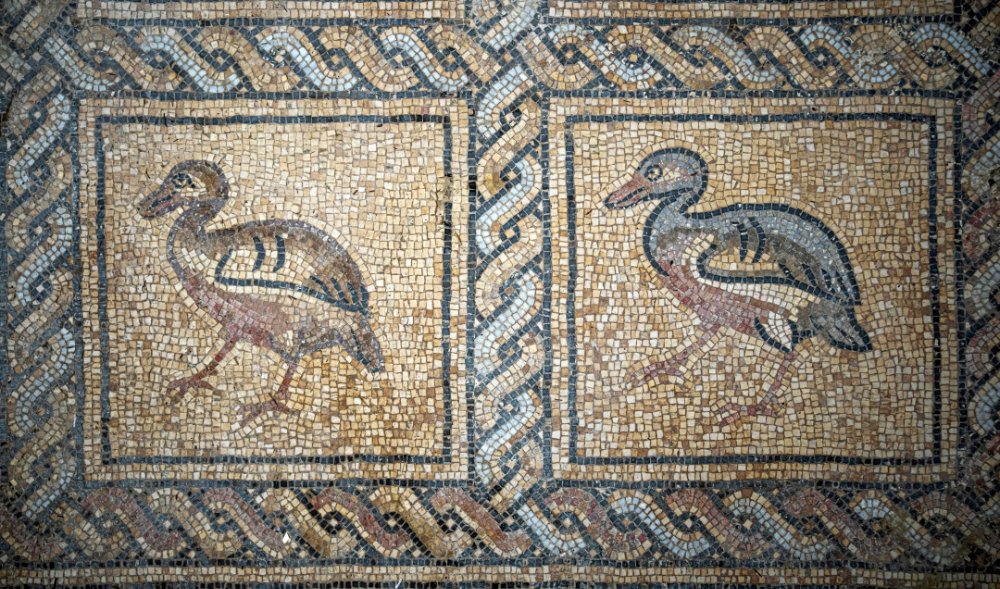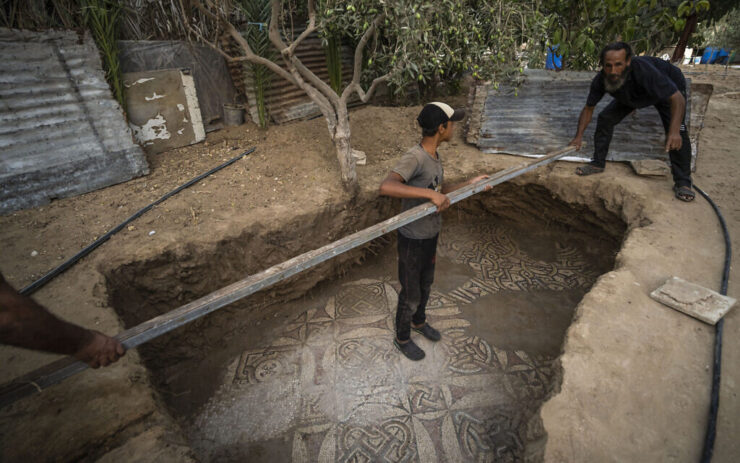Near the Israeli border in Gaza, a farmer discovered mosaics from the Byzantine era. A Palestinian farmer named Suleiman al-Nabahin discovered the mosaics as he was planting an olive tree in the Bureij refugee camp, which is within a half-mile from the Israeli border. He immediately informed the local authorities of his find.
Latin language Palaestina Secunda or Palaestina II was a Byzantine province during the Byzantine era from AD 390 until it was conquered by the Muslim armies in AD 634-636. The province saw the birth of Christianity under the Byzantines, but it was also a vibrant center of Judaism after the Romans drove the Jews out of Judea in the first and second centuries.
In the early 7th century, the province experienced a significant demographic collapse due to the consequences of the Byzantine-Persian war and the Jewish rebellion. Following the short-lived restoration of Byzantine rule, the Muslim armies caused the flight of a significant portion of the Christians to the north – into territories of northern Syria and Anatolia.
According to Heritage Daily‘s report, so far, Gaza crews have excavated several mosaic panels in collaboration with an international team of experts from the French Biblical and Archaeological School of Jerusalem. While some mosaics show parts of social life and geometric patterns, one shows animals like birds, bunnies, and dogs that are encircled by a flowery leaf pattern. Although excavations are still in their early stages, the mosaics are believed to date from somewhere between the 5th to 7th century AD.



Excavations have also uncovered evidence of buildings made from the fragments of walls that have survived, as well as expensive objects like glass artifacts.
According to the ministry, “This provides us with historical information and details about the ancient civilications and anthropology in Gaza, the historical and economic relations with the ancient regional environment and the status of Palestine across the world”
“These are the most beautiful mosaic floors discovered in Gaza, both in terms of the quality of the graphic representation and the complexity of the geometry.” said René Elter of the French Biblical and Archaeological School of Jerusalem.
